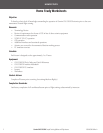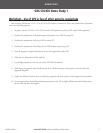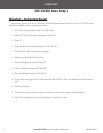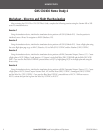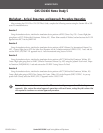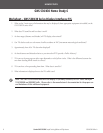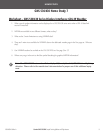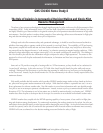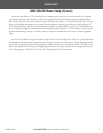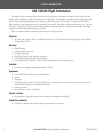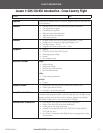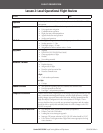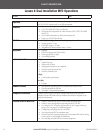
10
HOME STUDY
Garmin GNS 530/430 Sample Training Syllabus and Flight Lessons
190-00334-00 Rev. A
11
HOME STUDY
Garmin GNS 530/430 Sample Training Syllabus and Flight Lessons
190-00334-00 Rev. A
GNS 530/430 Home Study 8
The Role of Avionics in Aeronautical Decision Making and Single-Pilot
Resource Management
The advent of new avionics technologies has brought signicant gains for pilots in the area of in-ight aeronautical deci-
sion-making (ADM). Trafc Information Service (TIS) over the Mode S data link is one example of the relatively low cost
and highly valuable type of data available to the general aviation pilot to help maintain situational awareness in high trafc
environments. Data link weather is another shining example of how technology delivers more information for ight plan-
ning and decision making loop at a much lower price of acquisition.
Although such tools offer numerous safety and operational advantages, it should be noted that increased technical ca-
pabilities often tempt pilots to operate outside of their personal (or even legal) limits. The availability of GPS and moving
map systems, coupled with trafc and near real-time weather information in the cockpit, may lead pilots to believe they
are protected from the dangers inherent to “scud running,” or otherwise operating in marginal weather conditions. While
advanced cockpit technologies may mitigate certain risks, it is by no means a substitute for sound ADM. The challenge is
this: How should a pilot use this new information in ight to improve the safety of ight operations? The answer to this
question lies in how well the pilot understands the information, its limitations and how best to integrate this data into the
ADM process.
Items such as TIS provide a strong aid to locating trafc in a VFR environment, yet they should not be a substitute for
“see and avoid” technique. A pilot who receives a TIS Trafc Alert should visually identify the other trafc and react ac-
cordingly. Waiting until the last minute to use this data then scanning for trafc may very well prove too late depending
on the closure rate. Instead, the pilot should monitor the TIS data continuously in an effort to visually acquire trafc at the
maximum distance.
With readily available data link weather, which provides NEXRAD weather images similar to those found on the Inter-
net, pilots now have greater weather awareness in the cockpit. While data link weather is a powerful new tool, it is not a
direct replacement for airborne weather radar. Data link weather is not real-time information and is not detailed enough
for a pilot to use in an attempt to penetrate a thunderstorm. Instead, we start to pick up a common thread from the above
discussion of TIS: The information is not for last minute use; it should be monitored and it is a planning tool. NEXRAD
weather does allow the pilot to develop an idea of the scope of a storm that is not available from airborne weather radar.
NEXRAD weather data, coupled with the METAR reporting capability of most systems, is best used for in-ight plan-
ning and deviation strategy development. By continuously monitoring the weather situation in the cockpit, the pilot can
make better choices about diverting to other airports and/or changing the route of ight. As the pilot becomes more famil-
iar with the system(s) and is able to correlate the data presentation with the actual weather environment more accurately,
NEXRAD will come to enhance his or her decision making process and further the safety of ight.



